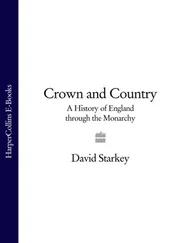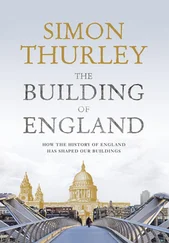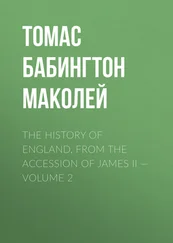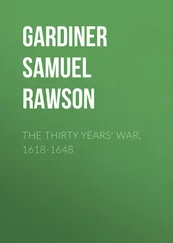Samuel Gardiner - A Student's History of England, v. 2 - 1509-1689
Здесь есть возможность читать онлайн «Samuel Gardiner - A Student's History of England, v. 2 - 1509-1689» — ознакомительный отрывок электронной книги совершенно бесплатно, а после прочтения отрывка купить полную версию. В некоторых случаях можно слушать аудио, скачать через торрент в формате fb2 и присутствует краткое содержание. Издательство: Иностранный паблик, Жанр: История, foreign_antique, foreign_prose, на английском языке. Описание произведения, (предисловие) а так же отзывы посетителей доступны на портале библиотеки ЛибКат.
- Название:A Student's History of England, v. 2: 1509-1689
- Автор:
- Издательство:Иностранный паблик
- Жанр:
- Год:неизвестен
- ISBN:нет данных
- Рейтинг книги:3 / 5. Голосов: 1
-
Избранное:Добавить в избранное
- Отзывы:
-
Ваша оценка:
- 60
- 1
- 2
- 3
- 4
- 5
A Student's History of England, v. 2: 1509-1689: краткое содержание, описание и аннотация
Предлагаем к чтению аннотацию, описание, краткое содержание или предисловие (зависит от того, что написал сам автор книги «A Student's History of England, v. 2: 1509-1689»). Если вы не нашли необходимую информацию о книге — напишите в комментариях, мы постараемся отыскать её.
A Student's History of England, v. 2: 1509-1689 — читать онлайн ознакомительный отрывок
Ниже представлен текст книги, разбитый по страницам. Система сохранения места последней прочитанной страницы, позволяет с удобством читать онлайн бесплатно книгу «A Student's History of England, v. 2: 1509-1689», без необходимости каждый раз заново искать на чём Вы остановились. Поставьте закладку, и сможете в любой момент перейти на страницу, на которой закончили чтение.
Интервал:
Закладка:
10. Latimer's Sermons. 1548-1550.– Latimer had refused to return to the bishopric from which he had been thrust by Henry VIII., but he lashed from the pulpit the vices of the age, speaking plainly in the presence of the court of its greed and oppression. It was not enough, he said, for sinners to repent: let them make restitution of their ill-gotten gains. In 1550the courtiers became tired of his reproofs, and he was no longer allowed to preach before the king.
11. Warwick and Somerset. 1550-1552.– In 1550Warwick was compelled to make a peace with France, and gave up Boulogne as its price. In 1551he was very nearly drawn into war with the Emperor on account of his refusal to allow mass to be celebrated in the household of the king's sister, Mary. Finally, however, he gave way, and peace was maintained. There was a fresh issue of base money, and a sharp rise of prices in consequence. Now that there were no monasteries left to plunder, bishoprics were stripped of their revenues, or compelled to surrender their lands. Hooper was given the ecclesiastical charge of the see of Worcester in addition to that of Gloucester, but he was driven to surrender all the income of the bishopric of Gloucester. The see of Durham was not filled up, and before the end of the reign it was suppressed by Act of Parliament, and ceased to have a legal existence till it was restored by Edward's successor. So unpopular did Warwick become that Somerset began to talk as though he might supplant his supplanter. His rash words were carried to the young king, who had for some time shown an interest in public affairs, and who now took the part of Warwick, whom he created Duke of Northumberland, against his own uncle. Somerset was arrested, and in 1552was tried and beheaded.
12. The Second Prayer Book of Edward VI. 1552.– In 1552Parliament authorised the issue of a revised Prayer Book, known as the Second Prayer Book of Edward VI. The first book had been framed by the modification of the old worship under the influence of Lutheranism. The second book was composed under the influence of the Swiss Reformers. The tendency of the two books may be gathered from the words ordered to be employed in the administration of the bread in the Communion. In the first Prayer Book they had been: "The Body of our Lord Jesus Christ, which was given for thee, preserve thy body and soul unto everlasting life." In the second they were: "Take and eat this in remembrance that Christ died for thee, and feed on Him in thy heart by faith with thanksgiving." There were some who urged that the Communion should no longer be received kneeling. It was significant that their leaders were foreigners – John Alasco, a Pole, and John Knox, a Scot, who was hereafter to be the father of a Scottish reformation more drastic than that of England. Cranmer withstood them successfully. The dispute marked the point beyond which the spirit of the Renascence refused to go. In the midst of his innovations Cranmer preserved not only a reverent spirit, but an admiration for the devotional style of the prayers of the medieval Church, which he therefore maintained even in the midst of the great changes made, mainly at least by himself, in the second Prayer Book. Happily, amidst these disputations, there was one point on which both parties could combine – namely, on the encouragement of education. The reign of Edward VI. is marked by the foundation of grammar-schools – too scantily carried out, but yet in such a measure as to mark the tendencies of an age which was beginning to replace the mainly ecclesiastic education of the monasteries by the more secular education of modern times.
13. The Forty-two Articles. 1553.– Edward was now a precocious youth, taught by much adulation to be confident in his own powers. He had learnt to regard all defection from Protestant orthodoxy as a crime. The statute which repealed the heresy laws did not altogether stop the burning of heretics, as the lawyers discovered that heresy was punishable by the common law. In 1550Joan Bocher was burnt for denying the Incarnation, and in 1551Van Parris, a Fleming, was burnt on the same charge. The persecution, however, was much more restricted than in the preceding reign. Few persons were punished, and that only for opinions of an abnormal character. In 1553forty-two articles of faith, afterwards, in the reign of Elizabeth, converted into thirty-nine, were set forth as a standard of the Church's belief by the authority of the king. So completely did the reforming clergy recognise their entire dependence on the king, that by a slip of the pen Hooper once wrote of 'the king's majesty's diocese of Worcester and Gloucester.'
14. Northumberland's Conspiracy. 1553.– A religious system built up solely on the will of the king, was hardly likely to survive him. By this time it was known that Edward was smitten with consumption, and could not live. Northumberland cared little for religion, but he cared much for himself. He knew that Mary was, by Henry's will sanctioned by Act of Parliament, the heiress of the throne, and that if Mary became queen he was hardly likely to escape the scaffold. He was daring as well as unscrupulous, and he persuaded Edward to leave the crown by will to Lady Jane Grey, the granddaughter of Mary, Duchess of Suffolk, the younger sister of Henry VIII. He secured (as he hoped) Lady Jane's devotion by marrying her to his own son, Lord Guilford Dudley. As Lady Jane was a convinced Protestant, Edward at once consented. His father, he thought, had left the crown by will in the case of the failure of his own heirs (see p. 411), and why should not he? He had been taught to think so highly of the kingship that he did not remember that his father had been authorised by Act of Parliament to will away the crown in the case of his children's death without heirs, whereas no such authority had been given by Parliament to himself. He forced – by commands and entreaties – the councillors and the judges to sign the will. Cranmer was the last to sign, and was only moved to do so by the sad aspect of his suffering pupil. Then Edward died, assured that he had provided best for the Church and nation.
15. Lady Jane Grey. 1553.– On July 10 Lady Jane Grey, a pure-minded, intelligent girl of sixteen, was proclaimed queen in London. She was a fervent Protestant, and there were many Protestants in London. Yet, so hated was Northumberland, that even Protestants would have nothing to say to one who had been advanced by him. Lady Jane passed through the streets amidst a dead silence. All England thought as London. In a few days Mary was at the head of 30,000 men. Northumberland led against her what troops he could gather, but his own soldiers threw their caps in the air and shouted for Queen Mary. On the 19th Mary was proclaimed queen in London, and the unfortunate Jane passed from a throne to a prison. 9
16. Mary restores the Mass. 1553. – Mary, strong in her popularity, was inclined to be merciful. Amongst those who had combined against her only Northumberland and two others were executed – the miserable Northumberland declaring that he died in the old faith. Mary made Gardiner her Chancellor. Some of the leading Protestants were arrested, and many fled to the Continent. The bishops who had been deprived in Edward's reign were reinstated, and the mass was everywhere restored. The queen allowed herself to be called Supreme Head of the Church, and at first it seemed as though she would be content to restore the religious system of the last year of Henry's reign, and to maintain the ecclesiastical independence of the country.
17. Mary's First Parliament. 1553. – By taking this course Mary would probably have contented the great majority of her subjects, who were tired of the villainies which had been cloaked under the name of Protestantism, and who were still warmly attached to the religion of their fathers. She was, however, anxious to restore the authority of the Pope, and also to marry Philip, the eldest son of her cousin, the Emperor Charles V. It was natural that it should be so. Her mother's life and her own youth had been made wretched, not by Protestants, but by those who, without being Protestants, had wrought the separation from Rome in the days of Henry, at a time when only the Pope's adherents had maintained the legitimacy of her own birth and of her mother's marriage. In subsequent times of trouble Charles V. had sympathised with her and it was by her intervention that she had been allowed to continue her mass in her brother's reign. Mary also wished to restore to the Church its lands. On the other hand, when Parliament met it appeared that her subjects wished neither to submit to Rome, nor to surrender the property of which they had deprived the Church, though they were delighted to restore the worship and practices which had prevailed before the death of Henry VIII. Parliament, therefore, authorised the re-establishment of the mass, and repealed the Act allowing the clergy to marry, but it presented a petition against a foreign marriage. Although the hatred of Spain which grew up a few years later was not yet felt, Englishmen did not wish their country to become a dependent province on any foreign monarchy whatever. Mary dissolved Parliament rather than take its advice.
Читать дальшеИнтервал:
Закладка:
Похожие книги на «A Student's History of England, v. 2: 1509-1689»
Представляем Вашему вниманию похожие книги на «A Student's History of England, v. 2: 1509-1689» списком для выбора. Мы отобрали схожую по названию и смыслу литературу в надежде предоставить читателям больше вариантов отыскать новые, интересные, ещё непрочитанные произведения.
Обсуждение, отзывы о книге «A Student's History of England, v. 2: 1509-1689» и просто собственные мнения читателей. Оставьте ваши комментарии, напишите, что Вы думаете о произведении, его смысле или главных героях. Укажите что конкретно понравилось, а что нет, и почему Вы так считаете.












